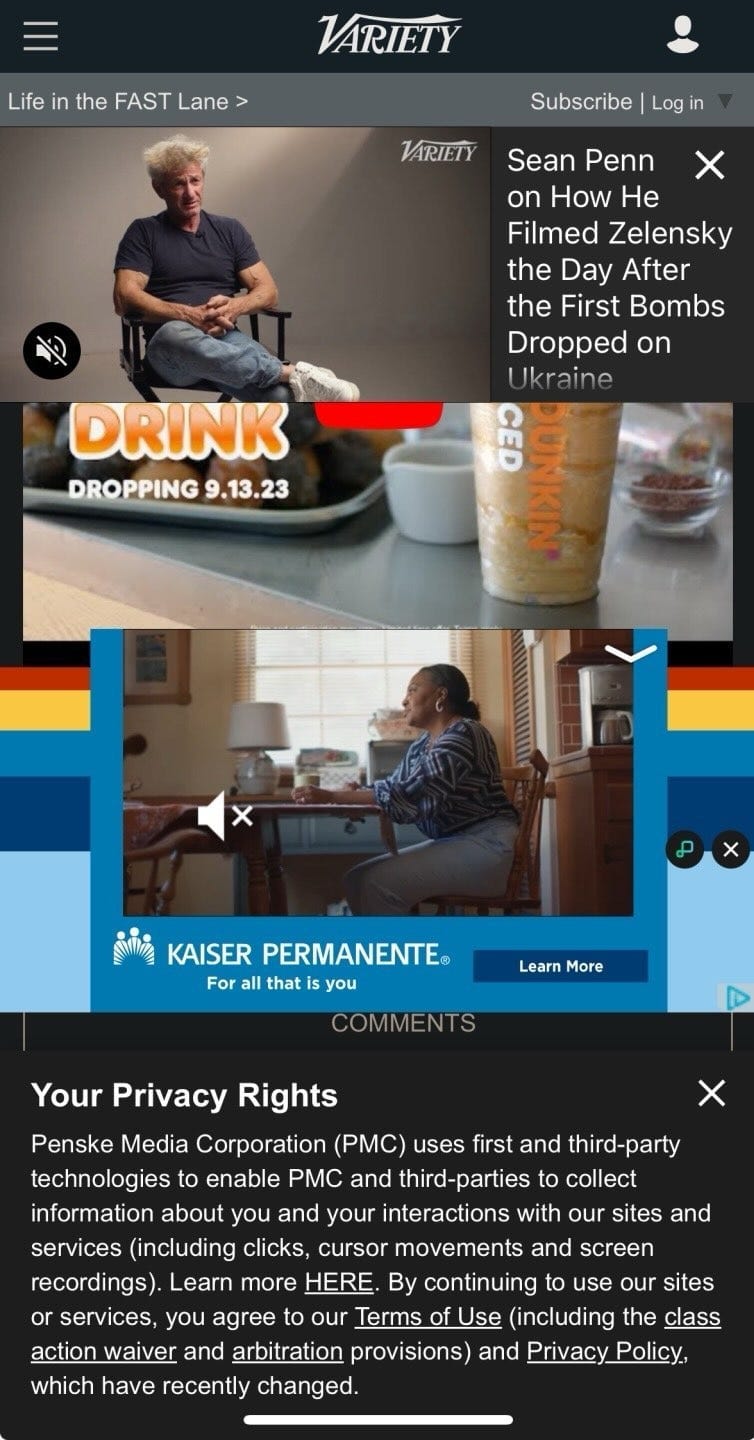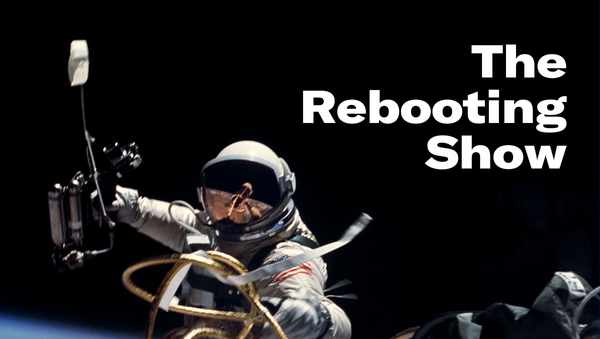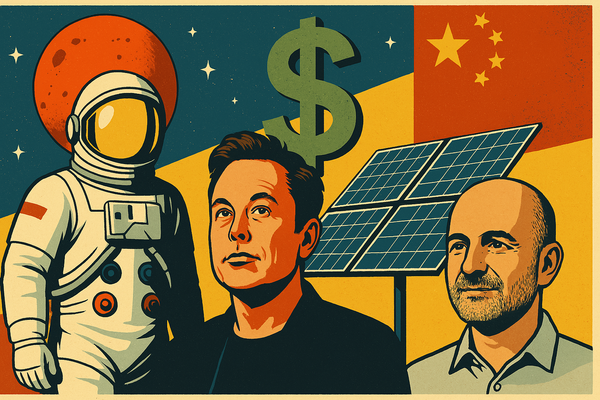The publisher doom loop
"Ads are so desperate because you have to get your yield up so much that it destroys the experience.”

This week, I wrote about the risk of a publishing doom loop if revenue keeps coming at the expense of user experience. In recommendations, the new pivot to video, the age of brands, the rise of ARPU and more. First up, a message from House of Kaizen.

Frameworks for growth
Find out why Nini Diana from Harvard Business Review said, “House of Kaizen’s growth framework gave us a great launching point for asking hard questions about our strategy and tactics.” They collaborate with publishers worldwide to grow subscription revenue through CX optimization.
Recommendations
The new pivot to video. In The Rebooting’s first research project, we surveyed 165 publishers to understand the state of publisher video businesses. We found nearly half of publishers (46%) said their video businesses are growing, yet only 19% said video revenue was over 25% of their revenue. (The State of Publisher Video Monetization)
The age of brands. Carmakers and other luxury brands are being put on real estate ventures all over Miami and beyond. (That Miami is the epicenter of this trend is, to put it mildly, unsurprising.) I expect publishing brands to push further into licensing as a way to diversify revenue and add pure margin. (NYT)
After the land grab comes consolidation. The name of the game in subscriptions was getting as many credit cards on file as possible. Now, to build truly sustainable businesses, publishers will need to focus on ARPU: average revenue per user. (Mather Economics)
Mapping media’s new era. Evan Shapiro has updated his media universe map, a handy way of seeing how tech has swallowed the media business. “Media’s Jurassic age is over. It’s just that the dinosaurs are in denial.” (Media War & Peace)
Enter the Webbys. Join the best of the Internet by participating in the 28th Annual Webby Awards. To take advantage of best pricing, enter by the Early Entry Deadline on Friday, October 27.(Webby Awards – Sponsored)
Publishing’s doom loop

Back in 2013, I noticed a truly atrocious webpage from CafeMom that I arrived to through a content-recommendation ad network link. Poking around, I realized that this page was the same as the page you’d arrive to if you went directly to CafeMom. It was basic ad arbitrage, and to me, was an example of how most publishing business models, no matter where they start, become increasingly adversarial to the audience. It made me wonder: Is this the worst page on the internet?
If anything, the situation has worsened in 2023, as publishers take a demented more-with-less strategy by turning to more ads, more autoplay video, more subscription pop-ups, all for less revenue.
“Every media property I encounter these days just reeks of desperation,” Troy said on our last episode of People vs Algorithms. “The biggest problem we have today is ads that are so desperate on publisher sites because they have to get their yield up so much that it destroys the experience.”
Picking up on the theme, Alex posted a link to his Threads post that caught a new candidate for the worst page on the internet, at least from a top-tier publishing brand.

“It’s impossible to read,” added Alex, who holds firm to his stance that advertising always makes products worse. “How are these sites meant to survive? It’s so anti-reader it’s a joke.”
That’s a good question. Publishers face the prospect of a doom loop in which increased competition for scarce ad dollars leads to more adversarial approaches like this. Those approaches will cause tech companies to crack down on distribution. As Alex points out, Artifact already uses AI to offer “clean” versions of articles. Use a browser like Arc, and it’s clear that this kind of what Troy approvingly calls “ad density” will be a tax on the lazy. That will hurt revenue more, leading to even more adversarial approaches and so on.
The hope that subscriptions will save news sites is just that. There is simply no path for most publishers to build robust subscription businesses that are anything but incremental. Condé Nast is not going to become primarily a subscription business. Commerce is hard to pull off, as Bustle Digital Group’s Jason Wagenheim told me last week. People don’t want to check out on Bustle. That leaves “commerce” mostly back where it started: affiliate links, maybe the oldest monetization tool of the internet. (More on this tomorrow, when my conversation with The Sporting News CEO Rich Routman.)
The reckoning could be hastened with the industry topic du jour: made-for-advertising websites. This is a catch-all term for low-quality arbitrage sites that clog search results pages and content-rec networks to grab cheap traffic and arb it with programmatic advertising. It’s a grimy but lucrative business. Why bother to create high-quality content and manage the headaches that come along with it? Being against MFAs is easy; yet it begs the question: Is what they’re doing all that worse than what so-called “premium” publishers do with their own SEO operations? Quality is a squishy concept.
Take Adexchanger’s attempt to nail this Jell-o to the wall:
“MFA websites will be full of ‘filler content,’ such as AI-generated nonsense, clickbait, unnecessary slideshows, and interlinked websites. This content provides a negative user experience and is unlikely to result in anything more than a negative brand impression of advertisers that appear on such sites.”
Not hard to find pages on many marquee publishers that tick most of these boxes.
MFA should really be made-for-algorithms, just as the pivot to video was really a pivot to Facebook. Cleaning up MFAs should also come with new incentives for premium content publishers to treat their users better. Show me a shit show, I’ll find the misplaced incentives.
Publishers are sensibly responding to marketplace incentives. It’s easy to get high and mighty from Statler and Waldorf’s seats, but operating publishing businesses is hard and requires tradeoffs, and the user experience is often the first to be traded, revenue the last.
Variety is owned by Penske Media, a publisher that is broadly admired for its executional acumen and savvy strategies. Jay Penske doesn’t do podcasts, although I’d love to do one with him, but every conversion I had with him, I found him not just thoughtful but immersed in the details. Not many publishing CEOs can go deep on propensity models. Most cruise at 30,000 feet. Jay’s an operator’s operator, so this isn’t some PE doofus with an executive MBA from an online school.
What’s more, Variety itself isn’t a hard news publisher. It operates in one of the last good ad markets (for-your-consideration ads) and can credibly pull off something of a Politico with B2B revenue lines (events, awards, spon con, subscriptions) and add consumer revenue because Hollywood “trades” have the sex appeal that Industry Dive publications simply do not.
But as Danny Noonan once told an irate DiNunzio about the price of Coke, “Lou’s been losin’ at the track.” Same as it’s ever been. In the early internet, you knew the end of the quarter was near when the pop-ups and pop-unders got particularly out of control. These days it’s just dueling autoplay videos.
The shift to a services model by publishers like Bustle has its many drawbacks, but one is that the media product can be treated with a bit more care. If you want to see the alternative reality, spend some time on UK news sites. It is atrocity after atrocity. If you thought “skins” were in the time capsule, I have some bad news for you, mate.
On this week’s People vs Algorithms podcast, we’ll be discussing ways out of adversarial models as well as Elon Musk’s actually sensible product development approach. Subscribe on Apple, Spotify or wherever you get podcasts. And be sure to check out last week’s episode, where we discussed Bustle’s adoption of a services model, Troy’s case for dismembering Disney and Alex’s spirited defense of childless adults vacationing at Disney World.
Thank you for reading this edition of The Rebooting. Please send me feedback by hitting reply or sending an email to bmorrissey@therebooting.com.
Thanks to House of Kaizen and the Webby’s for sponsoring this edition. Get in touch to discuss sponsorships.




